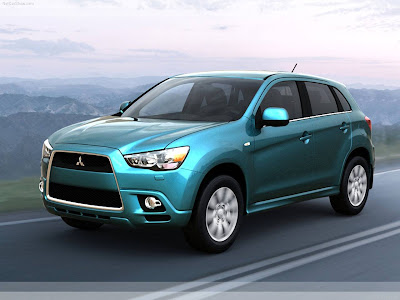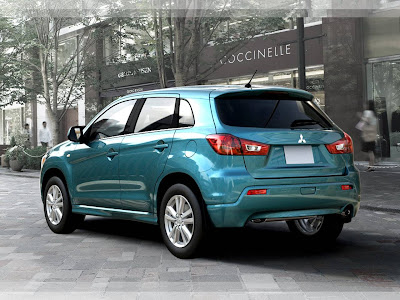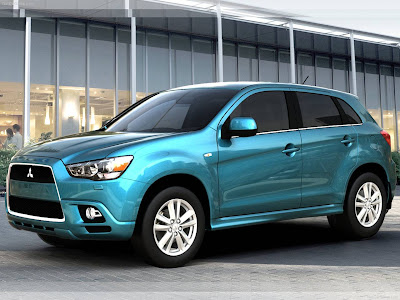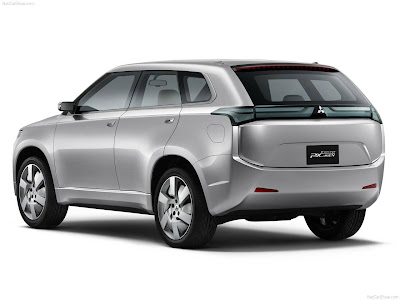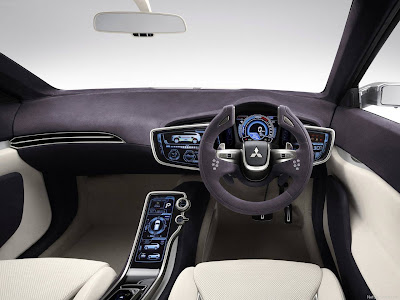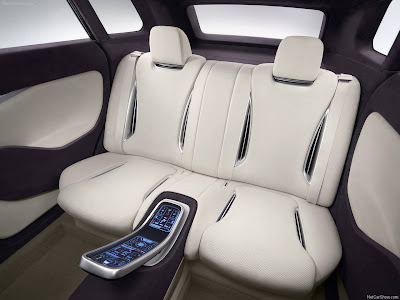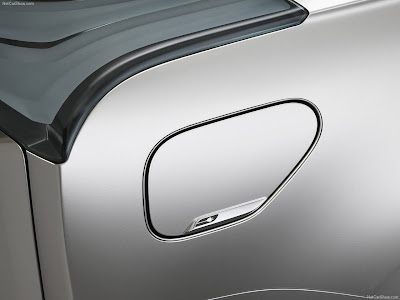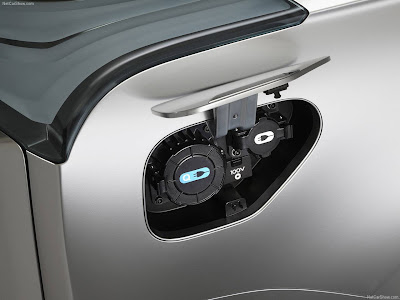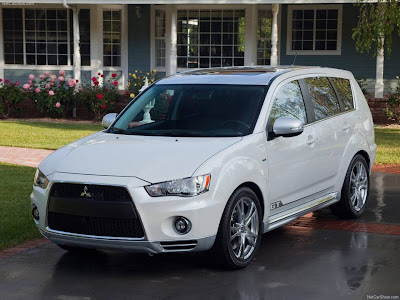




Mitsubishi Motors Corporation announced that its all-new compact crossover Mitsubishi RVR went on sale throughout Japan from February 17, 2010. The Mitsubishi RVR is an ideal compact crossover which achieves superior utility and running performance, excellent environmental efficiency (all models qualify for the Japanese domestic eco-car tax reduction), and a refined interior and exterior in a compact size at an accessible price (¥1,785,000 ~ ¥2,449,650, consumption tax included).
The new Mitsubishi RVR provides outstanding fuel efficiency from its lightweight, compact body. With the panoramic field of view of an SUV, the Mitsubishi RVR is easy to drive and provides turn-on-a-dime maneuverability. The vehicle is the ideal compact crossover, with ample luggage space for every application from daily driving to leisure outings.
The power train combines a 1.8-liter, 16-valve DOHC MIVEC engine with an INVECS-III sport mode 6-speed CVT. The vehicle features a regenerative braking system (high-efficiency electric power generation control), electric power steering, improved aerodynamics and other low-fuel consumption technologies down to fine detail, resulting in a 75% reduction from the Japanese FY 2005 emissions gas standards and exceeding the FY 2010 fuel efficiency requirements by 15%. All models qualify for the Japanese eco-car tax reduction (50% tax reduction to promote the popularization of environmentally-friendly cars).
The Mitsubishi RVR also incorporates super-wide HID headlights which provide a wide, ultra-bright beam for safe night driving, a panoramic glass roof (with LED illumination) for a sense of spaciousness during the day and a romantic ambiance at night, and push-button ignition. The vehicle has a refined and sporty interior with a black color scheme, silver highlights, and smooth, soft padding.
Mitsubishi RVR
Mitsubishi RVR
The Mitsubishi RVR is equipped with an advanced in-car entertainment including a terrestrial digital TV tuner HDD navigation system and a "link system" with USB, Bluetooth and other connections for music players and other external devices.
Exterior
"Jet fighter" grille, the design identity of Mitsubishi Motors, on the front mask.
Sporty, energetic exterior lines and a curving roof line with superior aerodynamics considering front, side and rear drag reduction, to express a dynamic silhouette.
LED brake lights at the rear which provide superior visibility.
Available in eight body colors including two new colors "Titanium Metallic Gray" and "Kawasemi Metallic Blue," which resembles the stunning azure feathers of the kingfisher (kawasemi in Japanese).
Interior
Comfortable passenger interior using smooth, soft padding, mesh fabric, and a sporty appearance with silver highlights accenting the black keynote color scheme.
Elegance with plating on the gearshift frame and a genuine leather-trimmed steering wheel and gearshift knob.
Packaging
Compact body with a total length of 4,295mm; superior packaging featuring a panoramic field of view for easy travel around town.
Comfortable interior space and superior stability from the 2,670 mm-long wheel base.
Power Train
The power train combines a high-output, high fuel efficiency 1.8-liter, 16-valve DOHC MIVEC engine (maximum output: 102kW[139PS]/6,000rpm; maximum torque: 172Nm [17.5kgfm] / 4,200rpm) with a paddle shift INVECS-III sport mode 6-speed CVT. Low (Japanese 10-15 mode) fuel consumption at the best level in its class of 15.2km/L for 2WD and 15.0km/L for 4WD models, achieved from a regenerative braking system (high efficiency electric power generation control), electric power steering, reduced friction engine and other fuel efficiency technologies combined with improved aerodynamic performance, resulting in a 75% reduction from the Japanese FY 2005 emissions gas standards (☆☆☆☆) and exceeding the Japanese FY 2010 fuel efficiency requirements by 15%. All models qualify for the Japanese eco-car tax reduction (50% tax reduction to promote the popularization of environmentally-friendly cars).
4WD System
The 4WD models adopt the electronically controlled 4WD system also used for the Outlander and the Delica D:5 that tailors traction control to the front and rear wheels to match driving conditions, where a selector gives the driver the choice of three driving modes (2WD, 4WD AUTO and 4WD LOCK).
Vehicle Control Technologies
Active Stability Control (ASC) is standard equipment on all 4WD models (and a factory option on 2WD models). ASC supports vehicle stability by detecting vehicle conditions and driving operations based on data from all types of sensors and Electronic Control Units (ECUs), and applying braking pressure and regulating engine torque as appropriate to prevent skidding and unstable movement as a result of sudden steering or loss of traction on slippery surfaces.
Hill Start Assistance (HSA), an electronic parking brake which detects slope and prevents the vehicle from backsliding when starting on an incline, is standard equipment on all 4WD models (and a factory option on 2WD models).
Vehicles are equipped with cruise control for highway driving.
Body & Chassis
For low fuel consumption, the Mitsubishi RVR adopts column electric power steering (EPS), LED brake lights, and tires which balance low fuel consumption and high performance: 215/60R17 tires on 17-inch aluminum wheels for "G" trim levels and 215/65R16 tires on 16-inch steel wheels with full wheel covers for "M" and "E" trim levels.
The high-flexibility, highly resilient front fenders improve shock resistance and decrease body weight.
MacPherson strut front suspension and multi-link rear suspension.
Utility
Panorama glass roof (with LED illumination) for a sense of spaciousness during the day and a romantic ambiance from amber-colored indirect lighting at night as a factory option.
Push-button engine switch for smooth engine start-up.
Multi-information Display (MID) with superior visibility as standard equipment on "G" trim levels. The MID indicates average speed, fuel efficiency, remaining fuel, warnings and other vehicle information using an easy-to-read color LCD screen.
Versatile storage space near the instrument panel, including a convenient passenger seat glove compartment, a floor console box, a small article box in front of the shifter and a console box between the two front seats.
Tilt and telescoping steering wheel to adjust the steering wheel height and angle for the optimal driving position.
The second-row seats are adjustable-return seats which fold forward for storage and provide two reclining positions. They can be returned from the storage configuration to either reclining position in a simple one-step operation, with the return seat position determined by the speed at which the seats are pulled back up.
High-capacity 419L luggage space with ample room for golf bags, suitcases and camping gear, plus a separate underfloor storage area for easy storage of wet or dirty items.
Rear seat center armrest pass-through for storage of long items (skis, etc.) as standard equipment on "G" trim levels.
Luggage compartment equipped with convenient retaining hooks to hold luggage in place.
Mitsubishi Multi-communication System (MMCS) with a 40GB hard disk drive (music server capacity for approximately 3,000 songs), full-segment (both 1-segment and 12-segment) terrestrial digital TV tuner, rearview camera to assist the driver when reversing the vehicle, and 7-inch wide screen display.
Replete in-car entertainment including a "link system" with USB, Bluetooth and other connections for portable music players and other external devices; hands-free phone system for Bluetooth-compatible mobile phones.
Rockford Fosgate Premium Sound System for enjoyment of dynamic concert-hall quality sound offered as a factory option on "G" trim levels (requires the MMCS option).
Safety Equipment
Super-wide HID headlights which provide a wide, ultra-bright beam for safe night driving.
Adjustable force-limiter seatbelts to mitigate the impact on passengers in case of collision. SRS knee airbags for the driver seat which reduce the risk of injury to the lower abdomen is standard equipment on all models. Side and curtain airbags are available as a factory option.
Emergency Stop Signal System (ESS) as standard equipment on all models. The ESS automatically blinks the hazard lights upon sudden braking or operation of the Anti-lock Braking System (ABS), to warn following drivers.
Mitsubishi Motors' proprietary Electronic Time and Alarm Control System (ETACS), which can customize various electronic systems in line with customer preferences, as standard equipment on all trim levels.





